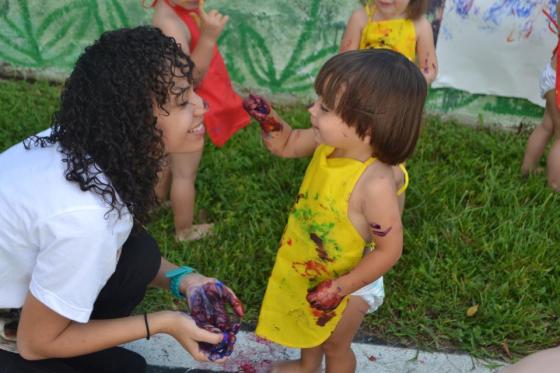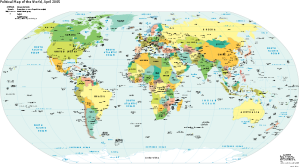Autism, Asperger’s and Art Therapy – Children on the Spectrum
September 12th
The following is a guest article by Ed Regensburg and has to do with art therapy and children with Autism / Asperger’s.
“DRAWN TO THE TABLE”
WHY CHILDREN ON THE SPECTRUM NEED ART
PSYCHOTHERAPY AS A REQUIRED SERVICE
by: Ed Regensburg MA, CHt.,ATR-BC,LCAT
Children (and anyone else) who have been diagnosed with a PDD / Autism / Asperger’s Disorder, (soon to be formally described as Autism Spectrum Disorder a/k/a “On the Spectrum”, according to the American Psychological Association’s Proposed Revisions for the DSM V) are at risk for being mis-understood and hence not treated with all of the most effective techniques available today. Perhaps the greatest dis-service is the widely accepted belief that because children on the spectrum experience diminished internal self-regulation, cannot utilize cognitive processes for appropriate self-expression, (such as words), and have difficulty building functional skills, connecting with others and experiencing effective interpersonal communication (socialization), that there is no viable option for meaningful psychotherapy.
It is understood that their impacted abilities of self control are sometimes expressed through explosive and seemingly “uncontrolled” behaviors placing themselves and / or others at risk for challenging and potentially abusive situations, and at least, non conforming behavior that usually has negative consequences. The widely accepted approach of using behavioral shaping techniques, such as Applied Behavior Analysis, etc. may be able to “shape “ or modify a pattern of dangerous behavior and also help increase functioning levels However, many of these children remain stressed because they are being asked to conform to our mainstream structures such as schools, treatment facilities, restaurants, shopping malls….etc, and the list is endless. The problem is that “our mainstream systems “ were designed for differently-abled children, ie: “Normal”. This basic driver of structures attempts to “contain” and re- structure ASD children who are responding and will respond to many different dimensions and types of stimuli. When these stimuli are appropriately understood, they can be included and worked with within a treatment model that is psychologically congruent for our children and has a therapeutic effect.
Psychotherapy as a discipline is usually not clearly defined enough to say we all share the same understanding… so let’s look at our terms. Psycho has its roots in the Greek language as Psyche: “of the mind” and according to the Encarta World English Dictionary:
Psyche is ”the human spirit or soul”.
Therapy is “the treatment of physical, mental or behavioral problems that is meant to cure or rehabilitate somebody (often used in combination).
Art is “the creation of beautiful or thought provoking works, for example, in painting, music or writing” and
Mind is “the center of consciousness that generates thoughts, feelings, ideas and perceptions and stores knowledge and memories”.
Therefore to treat the spirit, soul and mind of a child on the spectrum we must have a treatment pathway that embraces and integrates all of the above, and it must be practical. The treatment must have the ability to be applied in a way that does not threaten the child’s autonomy.
The incorporeal and non-local aspect of the human psyche and mind demand a treatment option that is not solely focused upon intellectual or cognitive functioning that leads only to behavioral changes or behavior modification. We must include the emotional and spiritual world if we are to understand, enter, validate and modify these emotional drivers of behavior. We now know from neuroscientific research that the brain is not the “fixed matter” once believed. Rather, current research supports the idea of neuroplasticity, which is the ability of the brain to change, grow, and rejuvenate according to human experience and need (Hancock, 2010).
The acceptance that children on the spectrum have compromised communicative abilities leads to the belief that they cannot participate in psychotherapy. Therefore, they need an alternative pathway to access the psychotherapeutic process. There is another modality that is more easily received by the child. However, this other modality can be perceived as very mysterious for the “mainstream treatment community” as it is often unfamiliar.
This pathway is a sensorially oriented treatment called Creative Arts Therapy. Art Psychotherapy is the visual (or pictorial) dimension of this pathway and is provided by credentialed and professionally trained Art Therapists, who by their education and natural connection to this internal, multisensory world can “connect” with our children on the spectrum.
The modality of Art Psychotherapy has two major dimensions, which are always at work. From the outside looking in, an untrained observer may confuse or not be able to identify the clear separation of the two dynamics constantly at work.
Firstly, the aspect of Behavioral Functioning is the primary attribute that MUST be addressed. Arriving on time for a session finding the correct seat in the Art Room, receiving the appropriate materials, following instructions,
appropriate handling of the materials (art supplies), and cleaning up are some of the many behavioral (or functional) steps a child must deal with in order to be “successfully” engaged in Art Therapy.
Secondly, the powerful internal process of conscious / unconscious emotional and spiritual expression of the self is at work, moving towards resolution all the time. This includes processes such as deductive reasoning, discriminatory selection (choosing the right color), cathartic release, spiritual perceptions, sublimation of aggressive drives (transformation), orientation to time and space, conquering the fear of failure as it is replaced with pride and accomplishment (which is even more scary than failure) and more detailed neurological phenomena (ie: recent research involving hormonal release, gene switching on / off when imagery is involved) (Hancock, ¶ 2). Even when it seems like the process is chaotic and it looks like “out of control behavior”, more times than not it is but a necessary phase of the treatment where it can be understood as an adaptive regression in service of the ego (Kris, 1952). This is an older term that puts a handle on the idea of becoming more primitive (chaotic) in expression in order to build skills of conscious control (self regulation) and purpose.
The result of addressing these two key dynamics within the safety and trust of the Art Room, with a trained Art Therapist produce outcomes of INTEGRATION and INCREASE of the child’s ability to withstand, self regulate, process, contain structure, and manage the powerful, chaotic emotions at work. This phenomenon is borne out and demonstrated over and over again through what is commonly described as the “Artwork”. It is but a “mirror”, a “frozen moment of time” of the child’s dynamic process, containing within it forms, colors, and other symbols of sensory, spiritual and intellectual perception, which can be “De-Coded”, and used to understand the process the child has gone through. This leads to accurate diagnosis, treatment, and understanding of the phenomena at hand.
In my over thirty years of experience, in all of the populations I have worked with ranging from mental health issues to developmental disabilities to physical disease, there has always been and continues to be a transcendent, spiritual dimension to the experience of expressing images. With children (and anyone) on the spectrum, at times, this phenomena becomes the primary focus of the “treatment.” William Stillman, in his book The Soul of Autism, speaks of the phenomena of spiritual perception in children with autism spectrum disorders. His book opens with a poignant quote from a mother of a child with autism, “Okay, here’s a weird theory and something to think about: Because our children are sensitive to sights, sounds, smells, and so on, could they possibly be more in tune with the spirit world as well?” (15).
Whether we believe ASD is a condition, disease, or simply an alternative genetic (spiritual) reality1, etc., it is without doubt a different way to perceive life (as opposed to the traditionally accepted “Normal”) and therefore demands an alternative (or more appropriate treatment modality) to respond to its unique set of requirements and standards. Interestingly, Art Therapists themselves are “differently-abled” as they have spent and will spend the majority of their natural lives responding through their sensorially oriented consciousness, always working to “make sense” out of a primarily intellectually oriented world, in terms of structures and their meaning. It is this natural phenomenon that bonds the Art Therapist with the Child with autism, and so trust is immediately being built upon introduction to each other, albeit on an unconscious level at first.
This is why children on the spectrum not only can respond to and therefore are appropriate for Psychotherapy but need a modality that it is attuned to their frequencies. Art Therapy may be able to be constructed to include more formal behavioral treatment (ABA) by utilizing the functional tasks inherent in any art making experience, however the two disciplines must be fully integrated, conscious, and trained in each other’s process in order to be effective and not fragment the child’s experiences.
If all we do is try to shape the child’s behavior “from the outside”, utilizing techniques such as verbal commands, token reinforcements, intellectual validations and extinctions (“do you “understand me”) and fail to “see” how and where in the psyche and physical body they experience stimuli and express their responses to a world that cannot receive and “e” their message, we will be involved in a long term dance and struggle for power and control. Unfortunately we may then miss the opportunity to connect with the child, validate their experience on the planet and above all share the love they, like all humans desire and need to survive and thrive in our world, especially during these challenging times.
© 2010 Ed Regensburg, ATR-BC, LCAT
American Psychiatric Association (2000). Diagnostic and statistic manual of
——————-
1. Reader is encouraged to reference the Indigo Child Phenomenon, Deepak Chopra, and Paul Davies for further reading on this subject.
mental disorders (4th ed.) Washington D.C.: Author.
American Psychiatric Association. DSM V Proposed Revision of Autistic Disorder. Retrieved July 11, 2010 from http://www.dsm5.org/ProposedRevisions/Pages/proposedrevision.aspx?rid=94
Association for Behavior Analysis International. Retrieved July 11, 2010 from www.abainternational.org
Chopra, D. (1989). Quantum healing: exploring the frontiers of mind/body medicine. New York: Bantam Books.
Davies, P. (1983). God & the new physics. New York: Simon & Schuster.
Dossey, L. (1982). Space, time & medicine. Boston: Shambhala Publications, Inc.
Hancock, P. Neuroscience and art. Retrieved July 11, 2010 from http://www.telluridearttherapy.com/neuroscience.htm
Kris, E. (1952). Psychoanalytic explorations in art. Madison, Conn.: International Universities Press
Myss, C. (speaker) 1996. Anatomy of the spirit: the seven stages of power and healing. (Cassette Recording). Boulder, Co: Sounds True.
Stillman. W. (2008). The soul of autism: looking beyond labels to unveil spiritual secrets of the heart savants. Franklin Lakes, NJ: Career Press.
Soukhanov, A. (Ed.). (1999). Encarta world English dictionary. New York: St. Martin’s Press
Read more: http://www.arttherapyblog.com/autism/aspergers-art-psychotherapy-children-spectrum/#ixzz1yYBtkqCq















